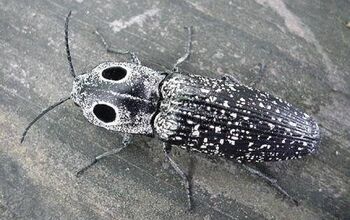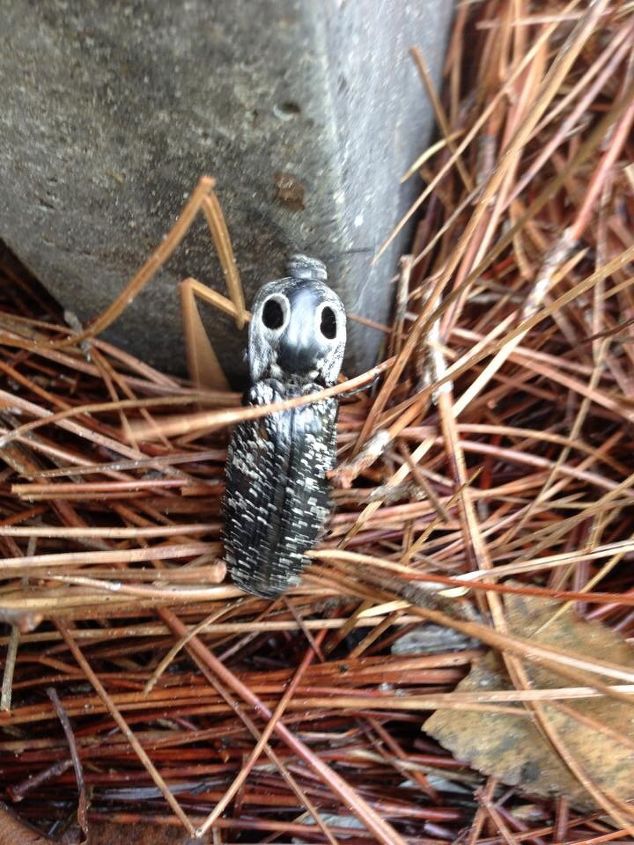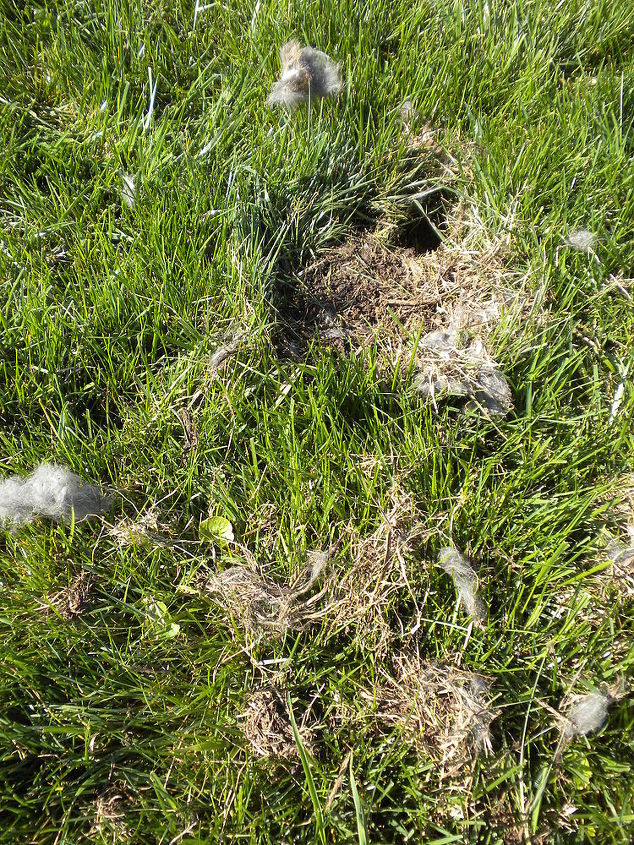Need info about something found in my friend's yard

-
just check out this video:) https://www.youtube.com/watch?v=nz0NDUlqvWo
 Xena Nierobisz
on Jun 21, 2014
Helpful Reply
Xena Nierobisz
on Jun 21, 2014
Helpful Reply -
-
Thanks Xena
 Linda Meyer
on Jun 21, 2014
Helpful Reply
Linda Meyer
on Jun 21, 2014
Helpful Reply -
-
I've seen these here in Spartanburg as well and wondered what the heck they were..I'm glad you posted and happy that Xena supplied and answer... Here's a link I also found..useful. http://www.cirrusimage.com/beetle_eyed_click.htm
 Vetsy
on Jun 21, 2014
Helpful Reply
Vetsy
on Jun 21, 2014
Helpful Reply -
-
Looks like an Ashy Gray Lady Beetle.
 Wolfe Art
on Jun 24, 2014
Helpful Reply
Wolfe Art
on Jun 24, 2014
Helpful Reply -
-
Interesting!
 Helen M
on Jun 24, 2014
Helpful Reply
Helen M
on Jun 24, 2014
Helpful Reply -
-
I have never seen a bug like this. Interesting bug.
 MARY ANN
on Jun 24, 2014
Helpful Reply
MARY ANN
on Jun 24, 2014
Helpful Reply -
-
I believe it's an Eastern Eyed Click Beetle.
 Susan
on Jun 24, 2014
Helpful Reply
Susan
on Jun 24, 2014
Helpful Reply -
-
If you turn it on it's back, it will eventually "click" to get itself upright.
 Susan
on Jun 24, 2014
Helpful Reply
Susan
on Jun 24, 2014
Helpful Reply -
-
Looks like a old ornament for Christmas tree!
 Ruth Nederlk
on Jun 24, 2014
Helpful Reply
Ruth Nederlk
on Jun 24, 2014
Helpful Reply -
-
lol, Thats a bug, heck I thought it was a pendant, and was wondering why you displayed it in the hay, heheheheheh, any way never seen a beetle like that!
 Halka.maryjo
on Jun 24, 2014
Helpful Reply
Halka.maryjo
on Jun 24, 2014
Helpful Reply -
-
Send a photo to your local state Xerces Society, or the department of agriculture. they will be able to ID it for you.
 Joan
on Jun 24, 2014
Helpful Reply
Joan
on Jun 24, 2014
Helpful Reply -
-
We are in Mebane NC, found one yesterday. It was at the base of a dead tree!
 Beth Lloyd
on Jun 24, 2014
Helpful Reply
Beth Lloyd
on Jun 24, 2014
Helpful Reply -
-
Please let us know!
 Cathy VandenBrook
on Jun 24, 2014
Helpful Reply
Cathy VandenBrook
on Jun 24, 2014
Helpful Reply -
-
Eyed Elator or Eyed Click Beetle. Hope you left it alone, as it's considered a beneficial insect whose larvae are "ferocious meat-eaters, dining on many other noxious wood-boring larvae, including those of wood-boring beetles" (http://aggie-horticulture.tamu.edu/galveston/beneficials/beneficial-52_big-eyed_elater.htm).
 Patsy Montana
on Jun 24, 2014
Helpful Reply
Patsy Montana
on Jun 24, 2014
Helpful Reply- See 2 previous
-
-
Yikes! What ever it is ... I'd run🙀
 Brenda
on Jun 24, 2014
Helpful Reply
Brenda
on Jun 24, 2014
Helpful Reply -
-
I found this very same bug on my back porch Sunday. it's shell is extremely hard and it's also here in Jacksonville NC. Gave me the creeps!!
 F Aman
on Jun 24, 2014
Helpful Reply
F Aman
on Jun 24, 2014
Helpful Reply -
-
My suggestion is that the entomophobics start reading AND learning about beneficial bugs so the bugs can be nurtured to do their jobs as assigned by the highest power whom so many claim to follow. We don't live with bugs in the house and for the most part we ship them back out of doors. Audubon has a pretty comprehensive field book to aid in identifying bus of all sorts. No one book can list all of the bugs but, it is a good place to start. Remember, your children will adopt the attitudes and beliefs the adults have and without reason, the children follow suit. In fact, not one bug I have read about does not have a particular job assignment to benefit OUR EARTH!
 Susan S
on Jun 24, 2014
Helpful Reply
Susan S
on Jun 24, 2014
Helpful Reply -
-
Those and fire ants! Lolllll
 Susan S
on Jun 24, 2014
Helpful Reply
Susan S
on Jun 24, 2014
Helpful Reply -
-
I'm in Richmond TX and I found one of these on a tree in the common yard of our apartment. It appeared to be "feeding" off an area of the tree that appeared to be "weeping" some form of moisture. It was there (at least every time I went out with our little dog) for over 24 hrs. The 2nd day there was a small butterfly that seemed to be waiting in line for the area. I DO KNOW that that butterfly moved POST HASTE when the beetle moved toward it. I found the beetle to be EXTREMELY interesting, and I stood studying it for some time when I first saw it. I'm with Susan S and Carrie Tait about ticks and fire ants!!! Seems I can't step foot outside my apartment without getting bit by a fire ant!!! Oh, and I want to add MOSQUITOES to that useless list!!!
 Lora (Howard) Cotton
on Jun 24, 2014
Helpful Reply
Lora (Howard) Cotton
on Jun 24, 2014
Helpful Reply -
-
I love this...I learn something new almost every day. Interesting fact on this beetle since I've never one....
 MaryAnn B
on Jun 24, 2014
Helpful Reply
MaryAnn B
on Jun 24, 2014
Helpful Reply -
-
It is a poping Beatle. (That's what my kids call them) if you put it on it's back it will snap and flip it's self over. Really awesome little guy. Harmless.
 Misty Sunshine Horne
on Jun 24, 2014
Helpful Reply
Misty Sunshine Horne
on Jun 24, 2014
Helpful Reply -
-
Not beneficial!!! The larva, called wireworm, are a problem. Wireworm infestations are more likely to develop where grasses, including grain crops, are growing. Crops susceptible to injury include small grains, corn, potatoes, sugar beets and vegetables. Legumes are less likely to be injured. Wireworms damage crops by feeding on the germinating seed or the young seedling. Damaged plants soon wilt and die, resulting in thin stands. In a heavy infestation bare spots may appear in the field and reseeding is necessary.
 Laurie
on Jun 24, 2014
Helpful Reply
Laurie
on Jun 24, 2014
Helpful Reply -
-
Interesting.. to say the least.. I have been catching up on "Nat Geo" channel programs about wild creatures... I have decided I don't need to visit Australia the middle east,or the rainforests now Ive seen enough creatures on these programs up close and personal to do me the rest of my life... There are so many critters to watch out for, scorpions, spiders,centipedes,and some ants... I had never heard of!! Killer BEES so aggressive they even land on the water and wait for you to surface... THen there are venomous snakes ... I watch it as an educational experience... however I would rather the venomous critters were GONE , leaving only the ones that are not threatening to do the "jobs" that need doing by snakes and BUGS... Seriously the world would be nicer and more enjoyable without having to worry about being bitten or stung by a creature that could possibly kill you before you could reach medical attention!
 Buster Evans
on Jun 24, 2014
Helpful Reply
Buster Evans
on Jun 24, 2014
Helpful Reply- See 1 previous
-
-
Is it a Chicata...not sure about spelling!
 Sandra O'Dell
on Jun 24, 2014
Helpful Reply
Sandra O'Dell
on Jun 24, 2014
Helpful Reply -
-
Thanks everyone- It is an Eyed click beetle.
 Linda Meyer
on Jun 24, 2014
Helpful Reply
Linda Meyer
on Jun 24, 2014
Helpful Reply -
-
We have them in our yard in northern WV also
 Shar
on Jun 24, 2014
Helpful Reply
Shar
on Jun 24, 2014
Helpful Reply -
-
Eyed Elater
 Sarah Bumgardner
on Jun 24, 2014
Helpful Reply
Sarah Bumgardner
on Jun 24, 2014
Helpful Reply -
-
Grace, the article you referenced says this: "Click Beetle grubs--also known as "wireworms" because of their elongated shape and hard exoskeletons (above right)--live in soil or dead wood for two to ten years, depending on the species. During that time, they are predatory on other wood-boring insects. Most other wireworm species, by comparison, chow down on roots and stems-- including those attached to corn, potatoes, tobacco, turf grasses, garden ornamentals, and a variety of legumes." I read that as specifically exempting the grubs of this particular click beetle from those classified as pests.
 Patsy Montana
on Jun 24, 2014
Helpful Reply
Patsy Montana
on Jun 24, 2014
Helpful Reply -
-
I agree the article could be written better. Take a look at this one, titled "Beneficial insects in the landscape" (http://aggie-horticulture.tamu.edu/galveston/beneficials/beneficial-52_big-eyed_elater.htm), which clearly states: "Unlike its many cousins, the Eyed Elater larva is a ferocious meat-eater that dines on many other noxious larvae, including those of wood-boring beetles, flies, and other undesirables."
 Patsy Montana
on Jun 24, 2014
Helpful Reply
Patsy Montana
on Jun 24, 2014
Helpful Reply -
-
pine beatle
 Ronnie Pennington
on Jun 24, 2014
Helpful Reply
Ronnie Pennington
on Jun 24, 2014
Helpful Reply -
-
Finding it my yard would scare me to death! That is until I learned more about it...
 Kathy C
on Jun 24, 2014
Helpful Reply
Kathy C
on Jun 24, 2014
Helpful Reply -
-
Google it...it's an eyed click beetle!
 Andrea
on Jun 24, 2014
Helpful Reply
Andrea
on Jun 24, 2014
Helpful Reply -
-
We have something like that is texas a form of locus I think that's how you spell in Spanish a chicara
 Melinda Chapa
on Jun 24, 2014
Helpful Reply
Melinda Chapa
on Jun 24, 2014
Helpful Reply -
-
The Eastern eyed Click Beetle.............yuck
 Angie W
on Jun 25, 2014
Angie W
on Jun 25, 2014
 Helpful Reply
Helpful Reply -
-
A beautiful Eastern Eyed Click Beetle!
 Fran Barrett
on Jun 25, 2014
Helpful Reply
Fran Barrett
on Jun 25, 2014
Helpful Reply -
-
BEAUTIFUL . . . seriously?? This ugly thing would be squished immediately (if it didn't attack me first)!
 Cheryl @ Artzzle
on Jun 25, 2014
Helpful Reply
Cheryl @ Artzzle
on Jun 25, 2014
Helpful Reply -
-
I guess beauty is in the eye of the beholder. (I think they are beauties too.) Don't worry, they're harmless. I held one in my hand and it played dead.
 Susan
on Jun 26, 2014
Helpful Reply
Susan
on Jun 26, 2014
Helpful Reply -
-
It's beautiful AND beneficial in the landscape, so two good reasons not to kill it.
 Patsy Montana
on Jun 26, 2014
Helpful Reply
Patsy Montana
on Jun 26, 2014
Helpful Reply -
-
Certainly interesting. Thanks for asking and for all the info. I don't usually kill critters unless they invade my house but it is nice to know who is beneficial and who isnt.
 Wendy Johnson
on Jun 29, 2014
Helpful Reply
Wendy Johnson
on Jun 29, 2014
Helpful Reply -
-
@Cheryl Brindle Why are some so quick to kill what they don't understand?
 Celeste S
on Jun 29, 2014
Helpful Reply
Celeste S
on Jun 29, 2014
Helpful Reply -
-
You have to admit it is scary looking.
 Le'
on Aug 03, 2014
Helpful Reply
Le'
on Aug 03, 2014
Helpful Reply -
Related Discussions
GNATS - How to get rid of them?
Somehow my house and garden got tiny gnats that killed my fuchsia plant and fly everywhere. I have tried ALL the Web recommendations - soap and oil dishes, sand in th... See more
Marigolds growing! Should I pinch the buds?
My marigold plants are growing. I heard that pinching the buds until Autumn will allow them to grow without killing the plant. Is this true?
Growing garlic
Growing our first garlic, should we wait until the leaves are drying out before we pick it? Husband picked first one today along with our first potatoes.
How to keep mice out of your garden?
Hi everyone, I have mice in my garden destroying my vegetables and I have also noticed them in the barn and shed. Please can someone tell me how to prevent them from ... See more
What's the best flower/plant to grow in Texas?
I know that opinions vary, but what's your opinion?!I have great luck w Rosemary plants. Green all year long.
Can someone tell me what kind of animal this was in my yard?
I thought maybe a rabbit was burrowing in my yard, but it's almost dead center of my lawn (not a very smart rabbit). The hole is not very deep, and I replanted it onc... See more
Is Creeping Charlie in your lawn a good thing or a bad thing?
Is there a sure-fire way to get rid of Creeping Charley?





